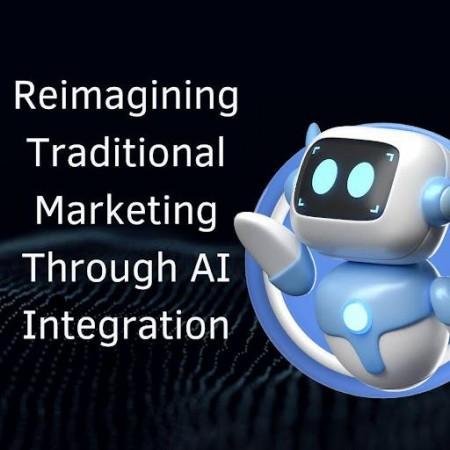
The digital revolution has transformed marketing, challenging traditional channels to adapt or face obsolescence. According to digital transformation expert Ankur Binwal, integrating AI into traditional marketing effectively bridges the gap between old and new strategies. His insights highlight how AI is rejuvenating print, television, radio, and outdoor advertising with innovation.
Optimizing Ad Placement with Predictive Analytics
AI integration refines ad placement through predictive analytics, leveraging historical data and audience behavior insights to identify optimal times and locations for advertisements. This data-driven approach can increase ROI by up to 20%, significantly enhancing marketing efficiency. By pinpointing peak engagement periods for print media and uncovering micro-primetime slots for TV and radio, AI ensures that campaigns connect with their target audiences more effectively and yield better results.
Transforming Content Creation
AI has revolutionized content creation in traditional marketing, leveraging technologies like Natural Language Processing (NLP) and computer vision. NLP facilitates sentiment analysis, allowing marketers to tailor content based on audience reactions, increasing engagement by up to 30% and predicting potential PR issues early. AI-driven headline generation achieves 40% higher click-through rates, demonstrating its effectiveness in captivating consumers. Computer vision supports visual consistency, using automated image recognition to align visuals with brand standards, reducing manual checks by 60%. Generative Adversarial Networks (GANs) further enhance content by creating unique, appealing visuals that resonate with audiences more effectively than standard stock images. These advancements underscore AI's transformative impact, optimizing engagement and ensuring brand coherence in traditional marketing.
Enhancing Audience Targeting
AI-driven cross-channel profiling has transformed audience targeting by merging offline purchase data with online behavior, creating a holistic view of customer habits. This comprehensive insight allows marketers to design highly personalized campaigns, leading to a 34% boost in customer retention and substantial improvements in upselling and cross-selling rates. The use of AI for generating lookalike audiences has further enhanced conversion rates by up to 63%, demonstrating the powerful capabilities of predictive modeling. Additionally, real-time AI analysis of variables such as weather and traffic enables dynamic content changes for digital billboards and optimizes radio ad scheduling. This adaptability ensures ads stay timely, relevant, and engaging, amplifying traditional marketing efforts' effectiveness.
Streamlining Processes with Automation
AI enhances process automation, streamlining marketing functions and conserving time and resources. AI-driven A/B testing accelerates the identification of effective content variations, cutting testing time by 50% and boosting conversion rates by 30%. In print media, AI-powered variable data printing enables personalized campaigns, achieving a 52% higher response rate than generic approaches. These advancements allow marketers to prioritize strategy and creative innovation over labor-intensive manual tasks, enhancing overall campaign efficiency and impact.
Addressing Challenges and Ethical Considerations
Despite the clear benefits, integrating AI in marketing is not without challenges. Concerns about data privacy are paramount, especially as cross-channel audience profiling becomes more prevalent. Ensuring transparent data practices and compliance with global data protection regulations is critical. Additionally, there is apprehension about job displacement in creative roles as automation becomes more sophisticated. However, 97% of marketers believe AI will augment human creativity, not replace it, leading to new roles that blend technological expertise with strategic oversight.
Another challenge is maintaining authenticity in AI-generated content. Consumers are increasingly discerning and expect transparency about the use of AI in marketing. Developing comprehensive guidelines for AI content creation and incorporating human oversight is essential to preserving brand voice and trust.
In conclusion, Ankur Binwal notes that integrating AI into traditional marketing represents a significant shift, blending innovation with established methods. This approach enables businesses to elevate campaign effectiveness and stay competitive in a digital era. By thoughtfully incorporating AI while upholding ethics and human creativity, traditional marketing can achieve outstanding results and strengthen audience connections.
















